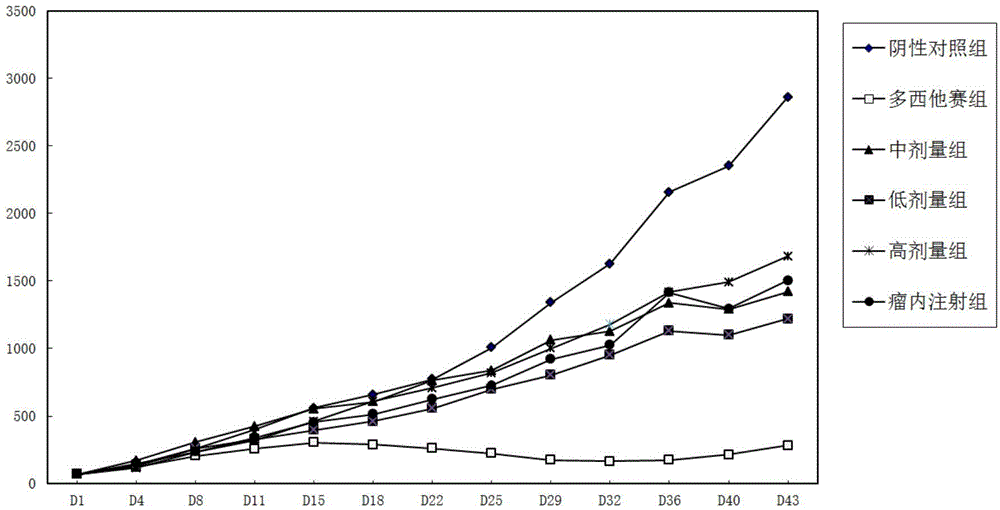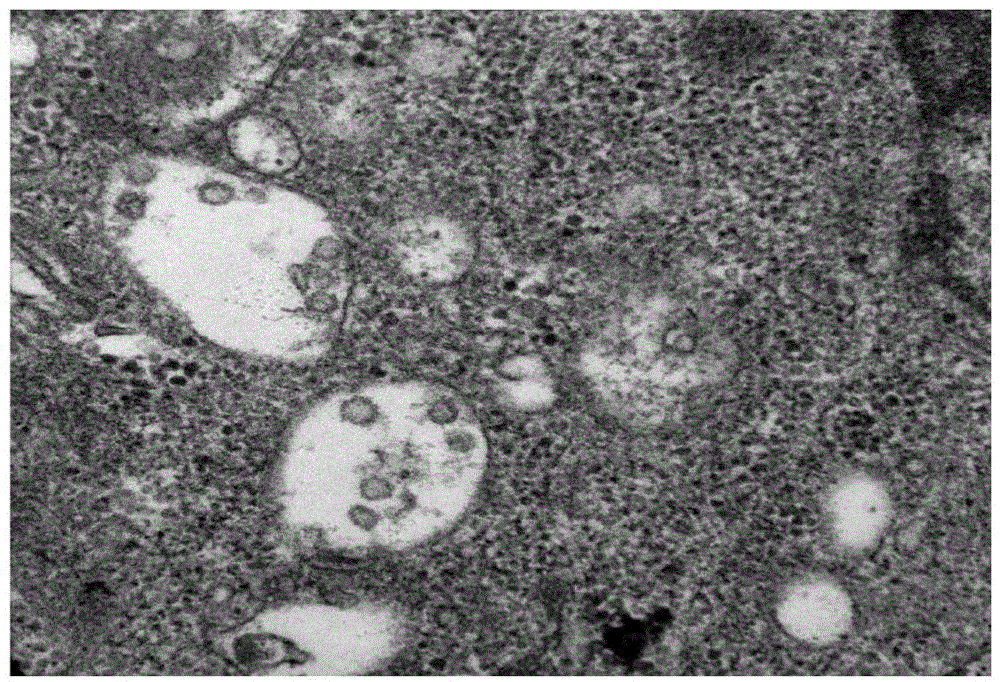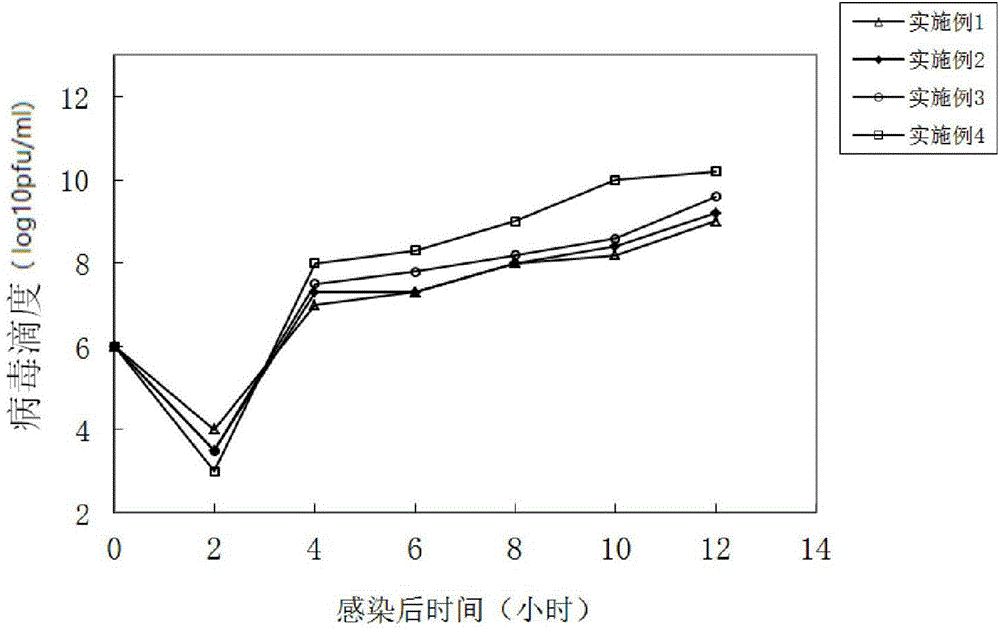Coxsackievirus and application of coxsackievirus in preparation of anti-tumor drugs
A Coxsackie virus and anti-tumor drug technology, which is applied in the field of anti-tumor drugs, can solve problems such as poor effects, and achieve strong cell lysis, improved anti-tumor effects, and low affinity
- Summary
- Abstract
- Description
- Claims
- Application Information
AI Technical Summary
Problems solved by technology
Method used
Image
Examples
Embodiment 1
[0058] Obtain the Coxsackievirus CVB3 mutant strain with recombinant structural protein VP1:
[0059] 1. Viral cDNA, cell lines, vectors and strains:
[0060] Viral cDNA: replace the corresponding base site on the genome cDNA sequence of the wild-type Coxsackievirus group B type 3 Nancy strain, and add a NotI restriction site at its 5' end and a SalI restriction site at its 3' end . Then this genomic cDNA is sent to a gene synthesis company (Jiangsu Jinweizhi Biotechnology Co., Ltd.) for whole gene synthesis
[0061] Cloning vector and enzyme: pVax1 was purchased from Invitrogen Company, NotI enzyme and SalI enzyme were purchased from Dalian Takara Company
[0062] Strains: Stbl3 competent cells were purchased from Invitrogene;
[0063] Hela cells: donated by Professor Martin of the Institute of Gynecological Oncology, Tongji Hospital, Huazhong University of Science and Technology.
[0064] 2. Transfection reagent:
[0065] Transfection reagent: Lipofactamine2000 and corr...
Embodiment 2
[0089] Obtain the Coxsackie virus CVB3 mutant strain of structural protein VP1 / VP2 recombination:
[0090] 1. Viruses, cell lines, vectors and strains:
[0091] Virus: the Coxsackievirus CVB3 variant strain of the structural protein VP1 recombinant obtained in Example 1;
[0092] Vectors, tool enzymes, strains and cell lines: pVax1-SalI was constructed in Example 1, NotI enzyme and SalI enzyme, Stbl3 competent cells, and Hela cells were derived from the same sources as in Example 1.
[0093] 2. Transfection reagent:
[0094] Transfection reagent: Lipofactamine2000 and corresponding transfection reagent Opti-MEM were purchased from Invitrogene;
[0095] 3. Experimental steps:
[0096] Using the method of nucleotide primer-mediated gene site-directed mutagenesis, the Coxsackievirus CVB3 mutant strain obtained in Example 1 with the recombination of the structural protein VP1 is located at the 1180 site of the Coxsackievirus genome in the coding region of the structural protein...
Embodiment 3
[0109] Coxsackie virus CVB3 mutant strain obtained by structural protein VP1 / VP2 / regulatory protein recombination:
[0110] 1. Viral cDNA, cell lines, vectors and strains:
[0111] Viral cDNA: replace the corresponding base site on the genome cDNA sequence of the wild-type Coxsackievirus group B type 3 Nancy strain, and add a NotI restriction site at its 5' end and a SalI restriction site at its 3' end . Then this genomic cDNA was sent to a gene synthesis company (Jiangsu Jinweizhi Biotechnology Co., Ltd.) for whole gene synthesis.
[0112] Cloning vector and enzyme: pVax1 was purchased from Invitrogen Company, NotI enzyme and SalI enzyme were purchased from Dalian Takara Company
[0113] Strains: Stbl3 competent cells were purchased from Invitrogene;
[0114] Hela cells: donated by Professor Martin of the Institute of Gynecological Oncology, Tongji Hospital, Huazhong University of Science and Technology.
[0115] 2. Transfection reagent:
[0116] Transfection reagent: Li...
PUM
 Login to View More
Login to View More Abstract
Description
Claims
Application Information
 Login to View More
Login to View More - R&D Engineer
- R&D Manager
- IP Professional
- Industry Leading Data Capabilities
- Powerful AI technology
- Patent DNA Extraction
Browse by: Latest US Patents, China's latest patents, Technical Efficacy Thesaurus, Application Domain, Technology Topic, Popular Technical Reports.
© 2024 PatSnap. All rights reserved.Legal|Privacy policy|Modern Slavery Act Transparency Statement|Sitemap|About US| Contact US: help@patsnap.com










